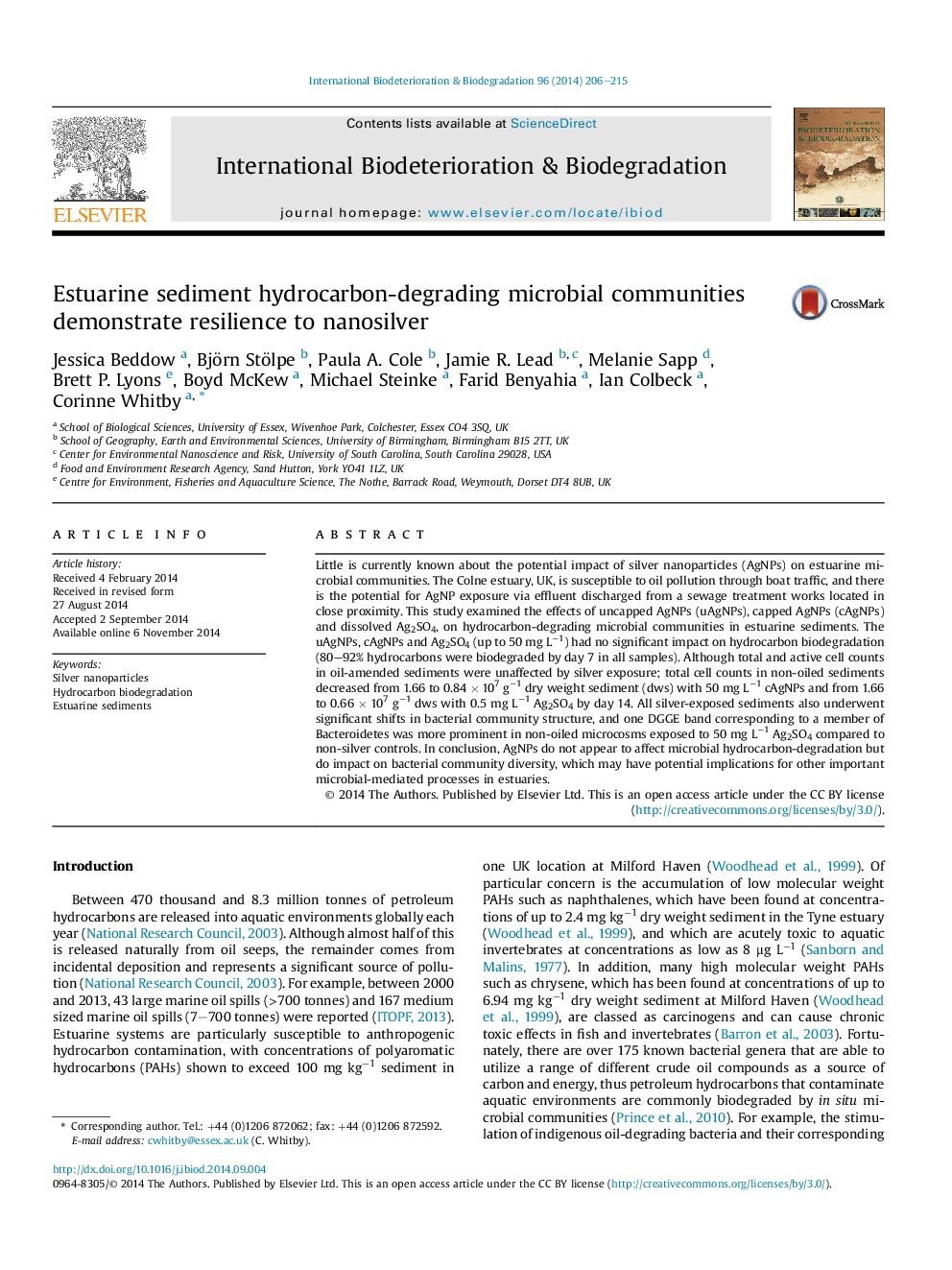| Article ID | Journal | Published Year | Pages | File Type |
|---|---|---|---|---|
| 6289253 | International Biodeterioration & Biodegradation | 2014 | 10 Pages |
Abstract
Little is currently known about the potential impact of silver nanoparticles (AgNPs) on estuarine microbial communities. The Colne estuary, UK, is susceptible to oil pollution through boat traffic, and there is the potential for AgNP exposure via effluent discharged from a sewage treatment works located in close proximity. This study examined the effects of uncapped AgNPs (uAgNPs), capped AgNPs (cAgNPs) and dissolved Ag2SO4, on hydrocarbon-degrading microbial communities in estuarine sediments. The uAgNPs, cAgNPs and Ag2SO4 (up to 50 mg Lâ1) had no significant impact on hydrocarbon biodegradation (80-92% hydrocarbons were biodegraded by day 7 in all samples). Although total and active cell counts in oil-amended sediments were unaffected by silver exposure; total cell counts in non-oiled sediments decreased from 1.66 to 0.84 Ã 107 gâ1 dry weight sediment (dws) with 50 mg Lâ1 cAgNPs and from 1.66 to 0.66 Ã 107 gâ1 dws with 0.5 mg Lâ1 Ag2SO4 by day 14. All silver-exposed sediments also underwent significant shifts in bacterial community structure, and one DGGE band corresponding to a member of Bacteroidetes was more prominent in non-oiled microcosms exposed to 50 mg Lâ1 Ag2SO4 compared to non-silver controls. In conclusion, AgNPs do not appear to affect microbial hydrocarbon-degradation but do impact on bacterial community diversity, which may have potential implications for other important microbial-mediated processes in estuaries.
Related Topics
Life Sciences
Environmental Science
Environmental Science (General)
Authors
Jessica Beddow, Björn Stölpe, Paula A. Cole, Jamie R. Lead, Melanie Sapp, Brett P. Lyons, Boyd McKew, Michael Steinke, Farid Benyahia, Ian Colbeck, Corinne Whitby,
